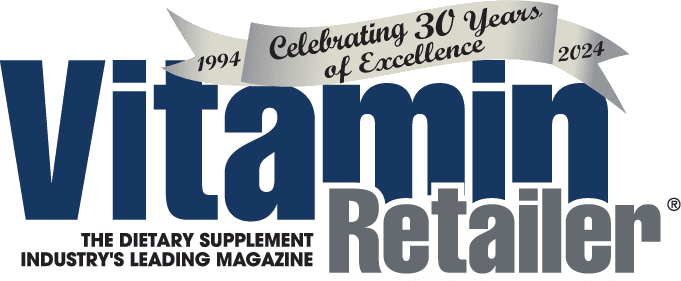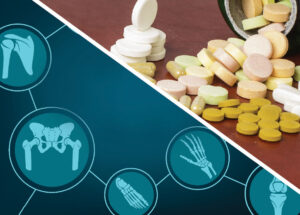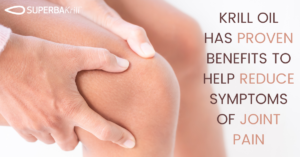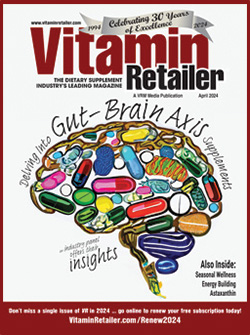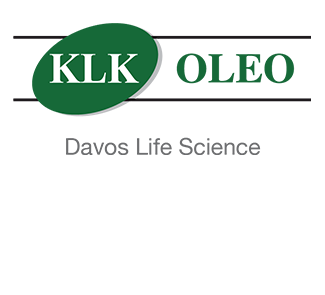In this article, we will examine the effects of the trace mineral selenium in the human body. Specifically, we’ll take a look at selenium’s biological functions, interactions with other nutrients, its role in human health, its intake in the U.S. and the rational for selenium supplementation. You will also see why it is important to avoid an excessive intake of selenium in order to enjoy its benefits to human health.
Biological functions
Selenium is essential in small amounts as a trace mineral, but toxic at high levels. As selenocysteine, selenium is incorporated into a number of selenoproteins (selenium-dependent antioxidant enzymes).1 It is these selenoproteins that are responsible for selenium’s biological functions. These selenoproteins protect against free radicals and other damaging reactive oxygen species, help regulate cell growth and viability, help produce biologically active thyroid hormones, support muscle metabolism, support protein production, support sperm formation, and may be involved in inflammatory and immune responses.2
Interaction With Other Nutrients
In the form of selenoproteins, selenium helps to convert vitamin E3 and vitamin c4 from their oxidized forms back into their non-oxidized/antioxidant forms. Selenium also works with copper and zinc to produce the antioxidant enzyme superoxide dismutase, and with iron to produce catalase.5 In addition, as selenoprotein selenium works with iodine in the T4 thyroid hormone to the biologically active T3 hormone.6
Human Health
There are a number of areas in which selenium can make a positive contribution toward human health. In the case of diabetes, however, the jury is still out regarding potential harm or benefit. Following is a review of the relationship between selenium and diabetes, and well as other areas of human health where it may make an impact.
Autoimmune Thyroiditis: Autoimmune thyroiditis (Hashimoto’s thyroiditis) is a disease in which the body sees the thyroid glands and its hormones as threats, resulting in the production of antibodies that target and destroy thyroid cells. Clinical research has demonstrated that three to 12 months of treatment with 200 mcg selenium daily in combination with the medication levothyroxine significantly reduces thyroid peroxidase antibodies by about six to 30 percent more than placebo in patients with thyroiditis after.7-13 Both sodium selenite and selenomethionine were used as sources of selenium in the research, but doses under 200 mcg daily may not be as effective.
Cholesterol Levels: In a randomized, double-blind, placebo-controlled study14, patients with relatively low selenium levels received 100 mcg, 200 mcg and 300 mcg of selenium (as high-selenium yeast) daily for six months. Those receiving 100-200 mcg experienced significant reductions in total cholesterol. Patients receiving 300 mcg daily, however, did not. Rather, they experienced a significant decrease in HDL cholesterol (the “good cholesterol”). It is not clear whether selenium supplementation would have the same impact on cholesterol levels in patients with higher selenium levels.
Diabetes: Selenium has been shown to activate key proteins involved in the insulin-signal cascade.15 Furthermore, one study found that selenium status was lower in men with type 2 diabetes than in non-diabetic men.16 Likewise, in those individuals who had type 2 diabetes for four to six years, lower plasma levels of selenium were found.17 Interestingly, serum selenium levels were also found to be lower in relatives of diabetic patients, compared to controls.18 In addition, low selenium and glutathione peroxidase (a selenoprotein) activity observed in diabetic patients is associated with thrombosis and cardiovascular complications19, and may be implicated in diabetic nephropathy (kidney disease).20
Conversely, other research has reported higher serum selenium levels in type 2 diabetics21, and a recent randomized, double-blind, placebo-controlled study in 1,202 men and women found that selenium supplementation (200 mcg/day) was linked to an increase in prevalence of type 2 diabetes.22 Although the mechanism associated with this increased risk is not understood, it may make sense for individuals at risk for diabetes to limit their daily intake to 100 mcg. Another consideration is that in animal research, supplementation with a form of selenium known as methylsenocysteine (MSC) was associated with an improvement of both blood glucose levels and kidney function.23 Consequently, it may be wise for diabetics or those at risk to use MSC if they plan to supplement with selenium.
Immune Response: In studies of healthy individuals24,25 and those with head and neck cancer26 who were supplemented with 200 mcg/day of selenium as sodium selenite for eight weeks showed enhanced immune cell response to foreign antigens compared with those taking a placebo. Research also indicates that selenium plays a role in regulating the expression of cell-signaling molecules called cytokines, which orchestrate the immune response.27
Cancer Cells: A case-control study within a prospective study of more than 50,000 male health professionals in the U. S. found a significant inverse relationship between selenium status in the body and the incidence of prostate cancer cell development.28 Individuals whose selenium status was consistent with an average dietary intake of 159 mcg/day of selenium daily had a 65 percent lower incidence of risk of prostate cancer cell development compared to those whose selenium status was consistent with an average intake of 86 mcg/day. Similar results were seen in other studies of examining selenium intake and the incidence of cancer cells from the lung29,30 and liver.31
Cardiovascular Health: Promoting selenoprotein activity could help pro-Mote healthy cardiovascular function by decreasing lipid peroxidation and influencing the metabolism of cell-signaling molecules known as prostaglandins.8 Research has demonstrated a higher rate of cardiovascular disease in individuals with lower serum selenium levels compared to those with higher levels.32-34 In a multi-center study in Europe, the lowest levels of selenium status were also associated with myocardial infarction (i. e., heart attack).35
Rheumatoid Arthritis: Surveys indicate that individuals with rheumatoid arthritis often have reduced selenium levels in their blood.36,37 In addition, some of these same individuals have a low selenium intake.38 The rationale for the interplay between selenium and joint function has to do with selenium’s antioxidant properties. Consider that the body’s immune system naturally makes free radicals that can help destroy invading organisms and damaged tissue, but that can also harm healthy tissue39 such as joint tissue. As an antioxidant, selenium may help control levels of free radicals in joint tissue40, which in turn may help support a healthy inflammatory response.
Intake & Rationale for Supplementation
Benefits for immune response and reduced incidence of cancer cell development were associated with supplementation of 200 mcg daily of selenium supplementation or 159 mcg daily of selenium from the diet. However, standard dietary intake of selenium in the
U. S. is about 100 mcg daily.41 That means to enjoy these benefits we still need roughly another 50 to 100 mcg of selenium daily. Clearly, this can be achieved through supplementation.
References:
1 Rayman MP. The importance of selenium to human health. Lancet, 2000;356(9225):233-241.
2 Higdon J, Drake VJ. Selenium. Linus Pauling Institute, Micronutrient Information Center. Oregon State University. Last updated 1/22/09. Retrieved September 13, 2012 from lpi.oregonstate.edu/infocenter/ minerals/selenium/.
3 Sword JT, Pope AL, Hoekstra WG. Endotoxin and lipid peroxidation in vitro in selenium- and vitamin Edeficient and -adequate rat tissues. J Nutr, 1991; 121(2):258-264.
4 Burk RF, Olson GE, Hill KE. Deletion of selenoprotein P gene in the mouse. In: Hatfield DL, Berry MJ, Gladyshev VN, eds. Selenium: Its Molecular Biology and Role in Human Health, 2nd ed. New York: Springer; 2006:111-122.
5 Selenium monograph. Micronutrient Information Center, Linus Pauling Institute. Oregon State University. Updated January 2009. Retrieved August 15, 2009 from lpi.oregonstate.edu/infocenter/minerals/selenium. 6 Rayman MP. The importance of selenium to human health. Lancet, 2000;356(9225):233-241.
7 Gartner R, Gasnier BC, Dietrich JW, et al.
Selenium supplementation in patients with autoimmune thyroiditis decreases thyroid peroxidase antibodies concentrations. J Clin Endocrinol Metab, 2002;87:1687-91.
8 Duntas LH, Mantzou E, Koutras DA. Effects of a six month treatment with selenomethionine in patients with autoimmune throiditis. Eur J Endocrinol, 2003; 148:389-93.
9 Gartner R, Gasinier BC. Selenium in the treatment of autoimmune thyroiditis. Biofactors, 2003;19:165- 70.
10 Turker O, Kumanlioglu K, Karapolat I, Dogan I. Selenium treatment in autoimmune thyroiditis: 9- month follow-up with variable doses. J Endocrinol, 2006;190:151-6.
11 Mazokopakis EE, Papadakis JA, Papadomanolaki MG, et al. Effects of 12 months treatment with L-selenomethionine on serum anti-TPO levels in patients with Hashimoto’s thyroiditis. Thyroid, 2007;17:609-12.
12 Toulis KA, Anastasilakis AD, Tzellos TG, et al. Selenium supplementation in the treatment of Hashimoto’s thyroiditis: A systematic review and a meta-analysis. Thyroid, 2010;20:1163-73.
13 Balaz C, Feher J. The effect of selenium therapy on autoimmune thyroiditis. Clinical and Experimental Medical Journal, 2009;3:269-77.
14 Rayman MP, Stranges S, Griffin BA, et al. Effect of supplementation with high-selenium yeast on plasma lipids: a randomized trial. Ann Intern Med, 2011; 154:656-65.
15 Stapleton SR. Selenium: an insulin-mimetic. Cell Mol Life Sci, 2000;57:1874-1879.
16 Rajpathak S, Rimm E, Morris JS, Hu F. Toenail selenium and cardiovascular disease in men with diabetes. J Am Coll Nutr, 2005;24(4):250-256.
17 Whiting PH, Kalansooriya A, Holbrook I, Haddad F, Jennings PE. The relationship between chronic glycaemic control and oxidative stress in type 2 diabetes mellitus. Br J Biomed Sci. 2008;65(2):71-4.
18 Ozkaya M, Sahin M, Cakal E, Gisi K, Bilge F, Kilinc M. Selenium levels in first-degree relatives of diabetic patients. Biol Trace Elem Res, 2009; 128(2):144-51.
19 Faure P. Protective effects of antioxidant micronutrients (vitamin E, zinc and selenium) in type 2 diabetes mellitus. Clin Chem Lab Med, 2003;41(8):995-8.
20 Kornhauser C, Garcia-Ramirez JR, Wrobel K, Pérez-Luque EL, Garay-Sevilla ME, Wrobel K. Serum selenium and glutathione peroxidase concentrations in type 2 diabetes mellitus patients. Prim Care Diabetes, 2008;2(2):81-5.
21 Bleys J, Navas-Acien A, Guallar E. Serum selenium and diabetes in U.S. adults. Diabetes Care, 2007; 30(4):829-834.
22 Stranges S, Marshall JR, Natarajan R, et al. Effects of Long-Term Selenium Supplementation on the Incidence of Type 2 Diabetes: A Randomized Trial. Ann Intern Med, 2007.
23 Kiersztan A, Baranska A, Hapka M, et al. Differential action of methylselenocysteine in control and alloxan-diabetic rabbits. Chem Biol Interact 2009;177(2):161-71.
24 Roy M, Kiremidjian-Schumacher L, Wishe HI, Cohen MW, Stotzky G. Supplementation with selenium and human immune cell functions. I. Effect on lymphocyte proliferation and interleukin 2 receptor expression. Biol Trace Elem Res, 1994;41(1-2):103-114.
25 Kiremidjian-Schumacher L, Roy M, Wishe HI, Cohen MW, Stotzky G. Supplementation with selenium and human immune cell functions. II. Effect on cytotoxic lymphocytes and natural killer cells. Biol Trace Elem Res, 1994;41(1-2):115-127.
26 Kiremidjian-Schumacher L, Roy M, Glickman R, et al. Selenium and immunocompetence in patients with head and neck cancer. Biol Trace Elem Res, 2000; 73(2):97-111.
27 Baum MK, Miguez-Burbano MJ, Campa A, Shor- Posner G. Selenium and interleukins in persons infected with human immunodeficiency virus type 1. J Infect Dis, 2000;182 Suppl 1:S69-73.
28 Yoshizawa K, Willett WC, Morris SJ, et al. Study of prediagnostic selenium level in toenails and the risk of advanced prostate cancer. J Natl Cancer Inst, 1998; 90(16):1219-1224.
29 Knekt P, Marniemi J, Teppo L, Heliovaara M, Aromaa A. Is low selenium status a risk factor for lung cancer? Am J Epidemiol, 1998;148(10):975-982.
30 Zhuo H, Smith AH, Steinmaus C. Selenium and lung cancer: a quantitative analysis of heterogeneity in the current epidemiological literature. Cancer Epidemiol Biomarkers Prev, 2004;13(5):771-778.
31 Yu MW, Horng IS, Hsu KH, Chiang YC, Liaw YF, Chen CJ. Plasma selenium levels and risk of hepatocellular carcinoma among men with chronic hepatitis virus infection. Am J Epidemiol, 1999;150(4):367-374.
32 Salonen JT, Alfthan G, Huttunen JK, Pikkarainen J, Puska P. Association between cardiovascular death and myocardial infarction and serum selenium in a matched-pair longitudinal study. Lancet, 1982;2(8291):175-179.
33 Virtamo J, Valkeila E, Alfthan G, Punsar S, Huttunen JK, Karvonen MJ. Serum selenium and the risk of coronary heart disease and stroke. Am J Epidemiol, 1985;122(2):276-282.
34 Suadicani P, Hein HO, Gyntelberg F. Serum selenium concentration and risk of ischaemic heart disease in a prospective cohort study of 3000 males. Atherosclerosis, 1992;96(1):33-42.
35 ardinaal AF, Kok FJ, Kohlmeier L, et al. Association between toenail selenium and risk of acute myocardial infarction in European men. The EURAMIC Study. European Antioxidant Myocardial Infarction and Breast Cancer. Am J Epidemiol, 1997;145(4):373-379.
36 Kose K, Dogan P, Kardas Y, Saraymen R. Plasma selenium levels in rheumatoid arthritis. Biol Trace Elem Res, 1996;53:51-6.
37 Heliovaara M, Knekt P, Aho K, Aaran RK, Alfthan G, Aromaa A. Serum antioxidants and risk of rheumatoid arthritis. Ann Rheum Dis, 1994;53:51-3.
38 Stone J, Doube A, Dudson D, Wallace J. Inadequate calcium, folic acid, vitamin E, zinc, and selenium intake in rheumatoid arthritis patients: Results of a dietary survey. Semin Arthritis Rheum, 1997;27:180-5.
39 Grimble RF. Nutritional antioxidants and the modulation of inflammation: Theory and practice. New Horizons, 1994;2:175-85.
40 Aaseth J, Haugen M, Forre O. Rheumatoid arthritis and metal compounds- perspectives on the role of oxygen radical detoxification. Analyst, 1998; 123:3-6.
41 Food and Nutrition Board, Institute of Medicine. Selenium. Dietary reference intakes for vitamin C, vitamin E, selenium, and carotenoids. Washington D. C.: National Academy Press; 2000:284-324.
Gene Bruno, MS, MHS, the dean of academics for Huntington College of Health Sciences, is a nutritionist, herbalist, writer and educator. For more than 30 years he has educated and trained natural product retailers and health care professionals, has researched and formulated natural products for dozens of dietary supplement companies, and has written articles on nutrition, herbal medicine, nutraceuticals and integrative health issues for trade, consumer magazines and peer-reviewed publications.
